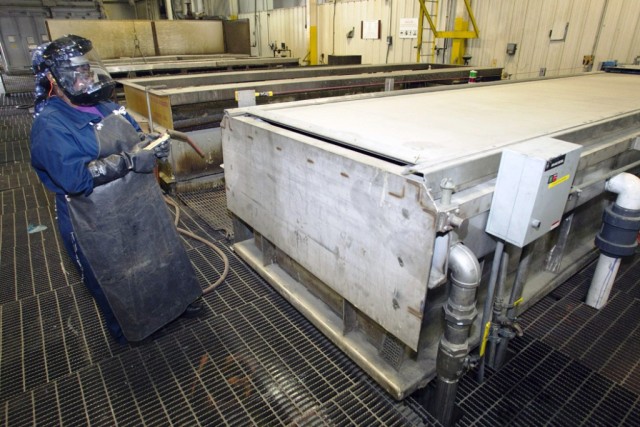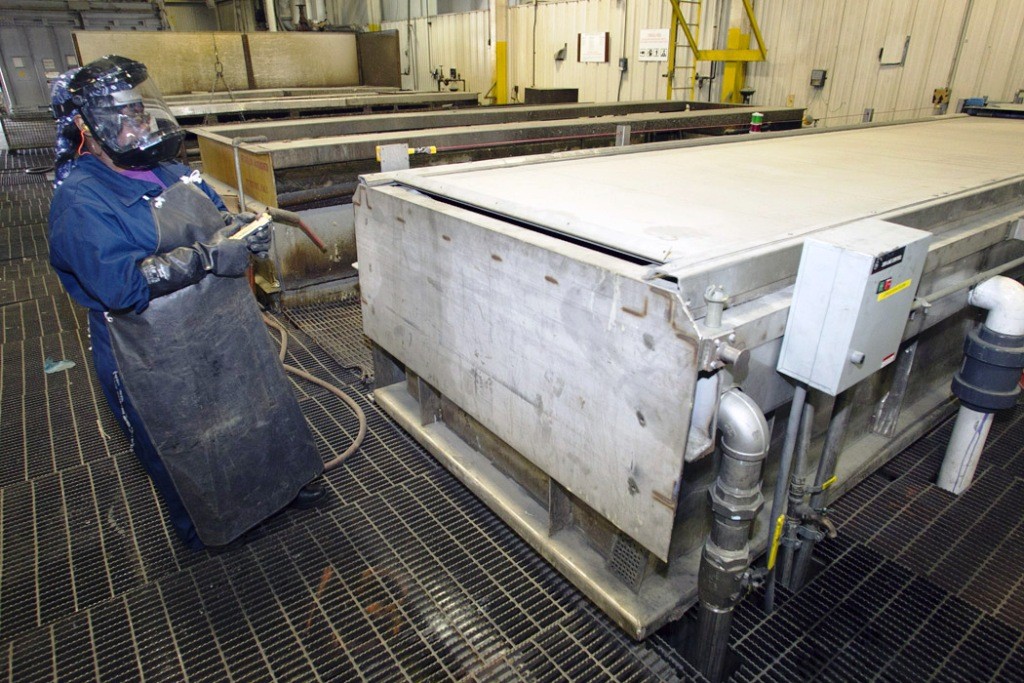ANNISTON ARMY DEPOT, Ala. - This month, two awards were presented to the Research, Development and Engineering Command Environmental Acquisition and Logistics Sustainment Program for their Sustainable Painting Operations for the Total Army project and the program placed second for a third honor.
The Secretary of the Army Environmental Excellence in Weapon System Acquisition - Small Program award was presented April 1 and the Secretary of Defense Environmental Excellence in Weapon System Acquisition - Small Program award was given April 15.
In addition to those accolades, the program earned a second place recognition for the SAE Environmental Excellence in Transportation award.
SPOTA focuses on eliminating organic hazardous air pollutants with a secondary focus on reducing volatile organic compounds and other hazardous materials. There are five areas of emphasis in the program - paints, sealants and adhesives, solvents, de-painting and rubber-to-metal bonding.
For many years, Anniston Army Depot has been working with the Army Research Laboratory on the SPOTA project here.
One area of emphasis has been on NPX, ANAD's methylene chloride/formic acid paint stripper.
In 2007, ANAD reported 247,757 pounds of methylene chloride were either released as emissions to the atmosphere or disposed of as a hazardous waste. This represented 94 percent of the Army's usage. With the promise of an NPX alternative, Anniston is poised to remove or significantly reduce NPX from its processes.
Engineers Matthew Taliaferro, Austin Minter and Larry Stocks have worked closely with the ARL for several years in order to identify a suitable alternative to NPX, while maintaining the quality and throughput of the de-painting operation. Their work contributed to the success of the SPOTA project.
"When we get these awards, the Army sees how we are moving toward being more environmentally friendly," said Patricia Dodson, a depot environmental engineer who has assisted in this effort and has also worked in other areas of the SPOTA scope (sealants and adhesives, coatings) to reduce HAP and volatile organic compound emissions at ANAD.
ANAD finished a trial period of the replacement chemical, D-Zolve 917, and is currently in the implementation stage of this project.
"On some of the parts, the time it takes to strip the paint is practically the same, but on the tougher parts it takes a little longer," said Stocks.
The depot has six NPX vats used by workers to efficiently remove paint from combat vehicles like the M1 Abrams main battle tank and the Paladin.
The vats containing the paint stripper had to be modified to add agitation and heating so D-Zolve 917 would work as well as NPX.
"Methylene chloride is a very strong chemical. Nothing is going to work better, but D-Zolve is a good, more environmentally friendly alternative," said Dodson.
The new chemical has a cost benefit as well as an environmental one.
One gallon of D-Zolve costs more than NPX, but it does not evaporate as quickly and it can be diluted to a point. This ultimately results in a considerable cost savings.
According to Minter, safety and performance were the determining factors in choosing NPX's replacement.
"The use of this nonhazardous product not only assists with lowering hazardous material usage and hazardous waste disposal, it offers a safer working atmosphere for the workforce, reduce hazardous air pollutants and reducing the amount of personal protective equipment required to be worn," said depot safety director Sue Turton.
There are currently three vats set up to work with D-Zolve and another four in progress. The tentative date for full implementation is set for August.


Social Sharing